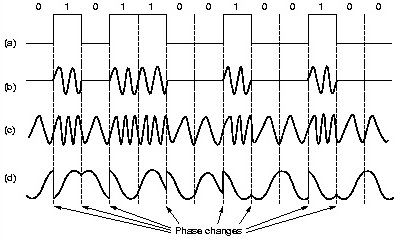I can understand the following text (Data Communications and Networking: 4th Edition, Berhouz Forouzan, Ch.5, page 179) which says that a property of a single sine wave carrier signal (phase, frequency or amplitude) can be changed to represent the pattern in digital data: 
But I fail to understand why something like human voice (as in a telephonic conversation) can't be similarly mapped onto a single sine wave signal by changing one of the characteristics of the wave (Frequency for example). Doesn't at any instant of time, human voice has a particular frequency and amplitude. Why can't that be represented by modulating a single sine wave? I am asking this because the same book says that in order to transfer human voice etc, we need a composite signal having many constituent sine waves of many frequencies:

Please explain this to me in simple terms why it is so. What's different between transmitting something like human voice on one hand and a digital data pattern on the other?And what are other "stuff" like human talk which necessitates use of a composite signal?
NB: I will appreciate if you can also tell IF human talk can be sampled, converted to a digital pattern, and THEN transmitted over a SINGLE sine wave signal. Thank you.


